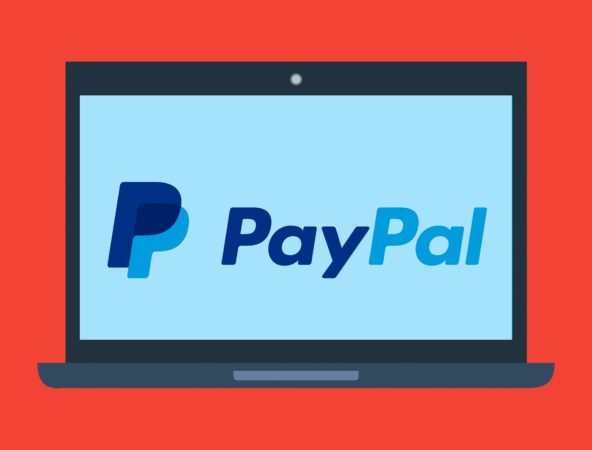
In today’s world, everyone wants everything in a hurry. The faster, the better. In the world of digital payments, a major competition is underway between the blockchain and PayPal. The blockchain is the relative newcomer, while PayPal has been around for about two decades. Here’s a look at some of the pros and cons of both money transfer systems to help you decide the long-term winner in the blockchain vs. PayPal debate.
Blockchain Technology and Other World-Changers
Blockchain technology is one of those digital revolutions that only comes around once or twice every generation. It’s as important an invention as the integrated circuit (1958), the microprocessor (1971), the personal computer (MITS Altair 8800, 1975), the internet (ARPANET, 1969), Windows (1985) and smartphones (2007). Blockchain’s distributed-ledger technology (DLT) offers a new, decentralized infrastructure for payment processing, financial markets transactions, accounting tasks, and many other data-driven functions, both personal and public.
PayPal might also be included in the above-mentioned tech honor roll, as it certainly paved the way for e-commerce to grow at breakneck speed. It also provided the world with an alternative to traditional bank wire services, Western Union and the like. PayPal also helped consumers and businesses become more comfortable with the idea of electronic money, weaning them away from a reliance on cash.
The Pros and Cons of Blockchain Payments vs. PayPal
Blockchain Payment Advantages:
- Decentralization: No single point of failure can destroy the ledger’s contents.
- Immutability: Once data is entered into the blockchain, it cannot be altered except in rare instances, and then only by agreement of all parties affected.
- Peer-to-peer: Cross-border payments take less time with blockchain due to fewer checkpoints.
- Permissionless: Payments don’t need a bank’s approval before they can be sent. The payor and payee control the transaction process, not a third party.
- No limit on payment size: Need to send someone five million dollars worth of Bitcoin, pronto? You can do it on the blockchain. Just make sure you’re aware of any applicable fiat-to crypto (and vice-versa) costs.
Blockchain technology is what makes peer-to-peer international payments happen quickly and efficiently. Photo by Craig Cooper on Unsplash
Blockchain Payment Disadvantages
- Slower transaction speeds (transactions per second) compared to PayPal, Visa, and Mastercard.
- Costly mistakes: If you make a mistake and send funds (crypto) to the wrong address, don’t look for any government regulator to bail you out.
- Fiat-to-crypto conversion costs: Unless all of your payments occur within the crypto ecosystem, you’ll need to convert your USD, EUR or GBP, etc. to Bitcoin, Ether, etc. When you receive payments in crypto, you’ll also incur transaction costs to convert the funds back to fiat.
- Transparency: Blockchain ledgers are public knowledge, inasmuch as anyone with the correct access codes can view the details of each transaction within. Privacy-minded individuals and companies may not be cozy with that arrangement.
PayPal Advantages
- Send money to anyone in up to 26 different (fiat) currencies with an email address. Well, as long as they have a bank account and have signed up for PayPal, that is.
- Regulation and oversight: PayPal users are protected by at least some of the rules and regs that govern traditional banks, such as Regulation E and the USA PATRIOT Act. Paying via a credit card in your PayPal account provides far greater consumer protection than does paying via debit card or PayPal cash balances.
- Fast transactions: PayPal offers users the ability to transfer their PayPal funds to their bank account in as little as 30 minutes when done via debit card.
- Fixed fees: Receiving payments for your goods and services will cost you a flat 2.9 percent fee, plus 30 cents per transaction. However, there is zero charge to purchase goods and services via PayPal. Sending money to family and friends is also free. However, currency conversion fees will apply if you send funds internationally.
- eCheck: This is another free PayPal payment option. It’s similar to an ACH transaction at a traditional bank but can take several more days to complete. This is an excellent choice for payees who want to avoid getting hit with the 2.9 percent fee. You can always ask your payor to use an eCheck instead of a regular PayPal payment.

PayPal continues to grow its client base, which now connects users in 200 nations with millions of merchant websites. Image: mohamed_hassan on Pixabay
PayPal Disadvantages
- Currency conversion rates: PayPal will determine the exchange rate you’ll receive. You must factor this additional cost into consideration when calculating your ultimate PayPal transaction fees.
- Payment limits: You can send only a maximum of $10,000 in any one PayPal transaction.
- Funds on hold: When receiving funds via eCheck, expect your money to remain in limbo for at least several business days. This is the downside of receiving your funds without any fees. It’s also a huge money-maker for PayPal, as they collect interest on the float.
Blockchain vs. PayPal, or a New Hybrid?
Today, PayPal can still process transactions faster than blockchain, but that may not be the case in the future. In fact, PayPal is definitely interested in blockchain and its potential for disruption in the financial world.
Might PayPal payments be sent via DLT in the near future? No one knows, but it’s certainly a possibility worth contemplating as this decade rapidly draws to a close. For all anyone knows, blockchain vs. PayPal might morph into something like BlockPal or PayChain.
The Wild Card in the Mix
Bitcoin hash rates continue to climb, albeit slowly as of early 2019. More and more merchants are willing to accept cryptos as payment. With the possibility of a major US (worldwide?) recession looming in 2019-2020, it’s possible that revenue-hungry retailers will welcome any form of payment they can get, including major cryptos.
However, what happens if 100 million Americans decide to use crypto every day to complete their personal and business transactions? Further, what if most of those consumers simply choose to keep their funds within the crypto ecosystem, never again converting their coins to fiat?
Be Optimistic, yet Ever-Vigilant
Overall, the future looks great for both blockchain and PayPal as world-class payment systems, worldwide. However, always be aware of the potential for government restrictions on crypto use (on consumer purchases, not on actual crypto trading). If crypto purchases are limited by government decree, then the blockchain will also be affected and its development could be slowed down.
PayPal appears to be immune from such a hypothetical crackdown unless they begin offering cryptos as an additional currency. Regardless of future events, the blockchain vs. PayPal saga should prove to be an interesting competition in the 2020s and beyond.
The post Blockchain vs. PayPal: Understanding the Difference and Evolution appeared first on CoinCentral.

Coincentral.com is author of this content, TheBitcoinNews.com is is not responsible for the content of external sites.
Our Social Networks: Facebook Instagram Pinterest Reddit Telegram Twitter Youtube










